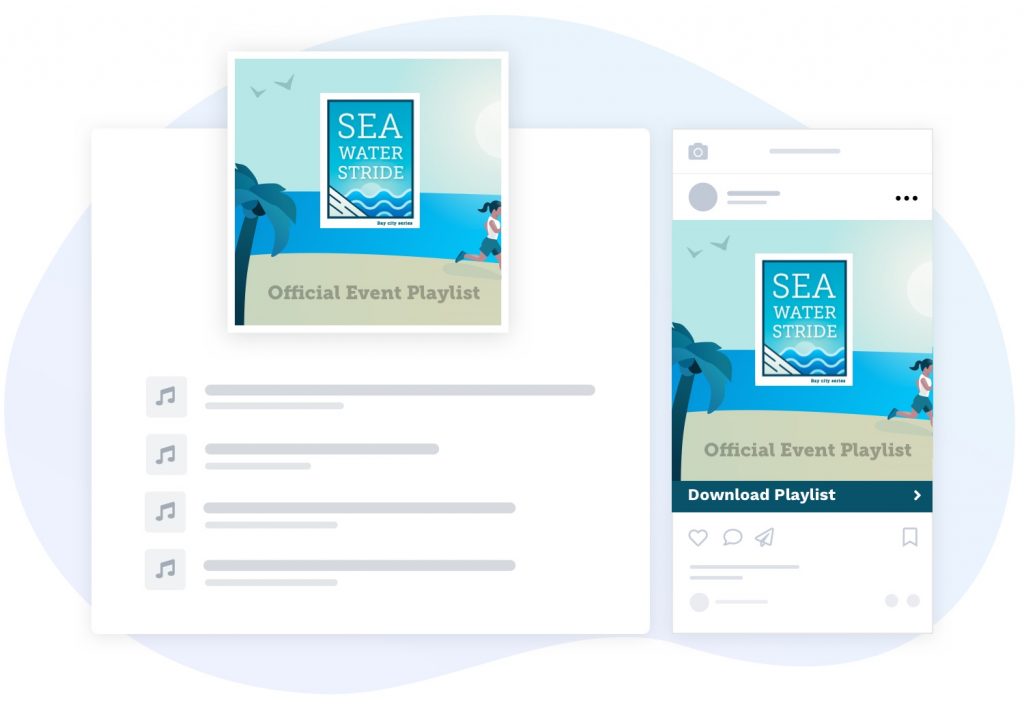Want to display your playlist on your event details page?
See our quick-and-easy instructions on how to add your Spotify or Apple Music playlist to your event details page.

Introduction
Growing up, I was told that there are three universal languages – numbers, love, and music. Music was constantly playing throughout my house, and in the car while driving around the city with my parents. Being surrounded by music is what led to my passion for playing guitar and putting together playlists for road trips, parties, and various occasions.
Music motivates me when I don’t feel motivated, and it calms me down when I am having a difficult day. Recently, I have discovered a new appreciation for running, which also helps me feel motivated and calm. With the powerful combination of running and music, I am able to stay focused on my run and enjoy a great soundtrack to my work out.
Listening to music is said to provide an experience to the mind, body, and soul. It’s an impactful motivator that gets people dancing, exercising, and just moving in general. Music unites us, and with virtual events becoming more popular these days, I believe we can leverage the power of music to stay connected.
Why should I create a playlist for my event?
According to a poll by Runner’s World, 61% of runners polled said they listen to something while running, and 82% of those runners are jamming to their favorite music. I even polled my colleagues and 70% of Race Roster employees run to playlists.
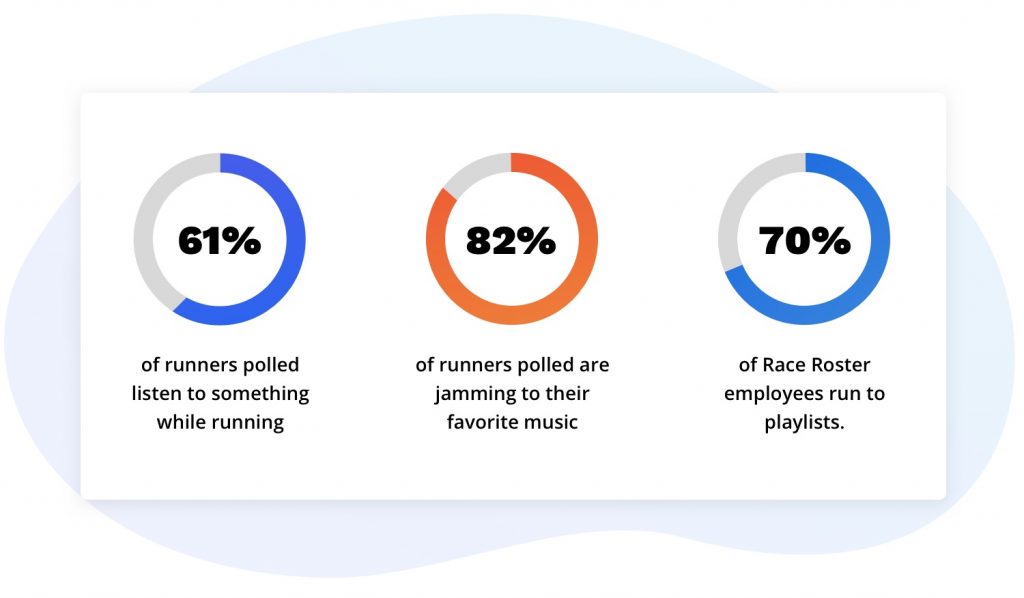
Moreover, we are noticing that an increasing amount of individuals are running with a device to keep track of their time and stats. Apps like the ASICS Runkeeper™ app allow you to listen to your favorite playlists while running or training for your event.
Sharing a customized playlist with your participants can enhance their overall event experience – especially if your event has a theme! For example, your event could be based on a specific genre of music, bringing participants who enjoy that particular genre together for an unforgettable experience.
What songs should I add to my playlist?
There are many elements to consider when curating a playlist. Here are 5 components to keep in mind when building your playlist:
- Tempo: Tempo is the speed at which a passage of music is or should be played. It’s also the rate of motion or speed of activity. With that being said, select songs that get people going! The songs you pick should be more upbeat, up-tempo, or have a higher BPM (beats per minute). This will encourage runners to maintain a faster pace.
- Genre: Variety is the spice of life. Imagine eating the same thing every day for the rest of your life. It would probably get boring very quickly. The same thing goes for music – whether it’s pop, rock, hip-hop, funk, etc. You know your audience – so pick songs from a variety of genres that you know they will enjoy!
- Lyrics: This is not the time for bleak songs with daunting lyrics. Include songs that have uplifting, motivating, and empowering lyrics. The right lyrics or motivational beat at the right time can give you a kick in the backside and add a little extra pep in your step.
- Nostalgia: There’s a reason why we always hear throwback jams on playlists or see musicians cover old songs. People love nostalgia! Individuals associate these songs with a happy memory, period, or place. While you want to remain current, don’t be afraid to add some classic tracks to your playlist. These songs are hits for a reason and it’s always fun to take a run down memory lane.
- Sequencing/Length: The ordering of songs is important. You do not want to stack all of your higher BPM songs at the beginning of your playlist. Additionally, the length of your playlist is also important. I recommend creating a playlist with a minimum of 50 songs. It’s important to include some extra songs in your playlist so your runners don’t run out of music if they decide to skip a song or two.
Which platform should I use to create my curated playlist?
There are many music streaming services available to the public. However, the two most popular are Spotify and Apple Music. According to Digital Trends, there are over 120 million Spotify subscribers and nearly 60 million with Apple Music. I recommend creating your event playlist on both platforms to expand your audience reach. For your assistance, I have added instructions on how to create a playlist on both Spotify and Apple Music.
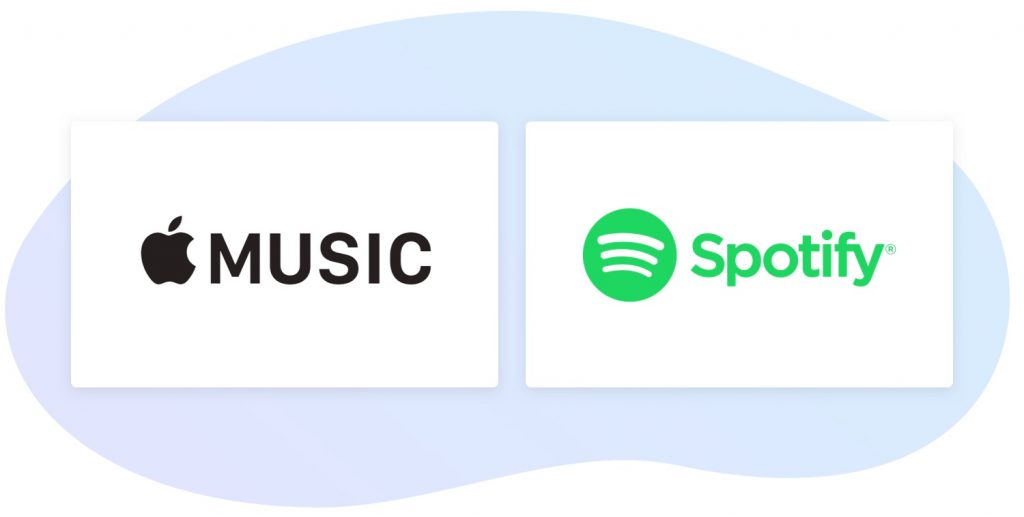
How to share your event’s curated playlist on Race Roster
Email campaign tool: Utilize Race Roster’s email campaign tool to communicate with your participants and direct them to download your event playlist.
Event page settings: Adding your playlist to your event details page is quick and seamless. Visit your event page settings and create a new content block. Simply select “Spotify playlist” or “Apple Music playlist” as the type and insert the URL of your playlist. Hit save and you’re done! No other action required.
How to get the URL:
- Apple Music: When viewing your playlist on Apple music, tap the three dots near the top of the page, choose the ‘Share Playlist option and select ‘Copy Link’. If you are on a Mobile device, simply select “Copy” after tapping the three dots.
- Spotify: When viewing your playlist on Spotify, tap the three dots that are displayed near the top of the screen. From there, choose ‘Share’, and select ‘Copy Playlist link’.
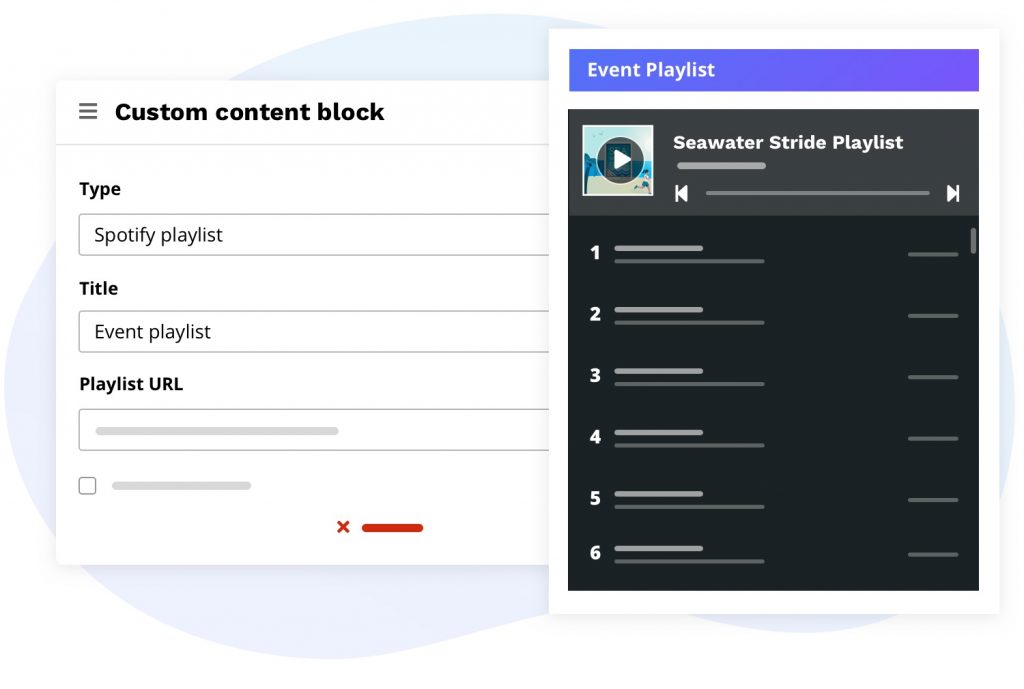
Call-to-action button: Include a call-to-action (CTA) button on your event details page that links out to your curated playlist.
Confirmation page: Customize the ‘thank you’ message displayed on your registration confirmation page to also include a link to your event playlist.
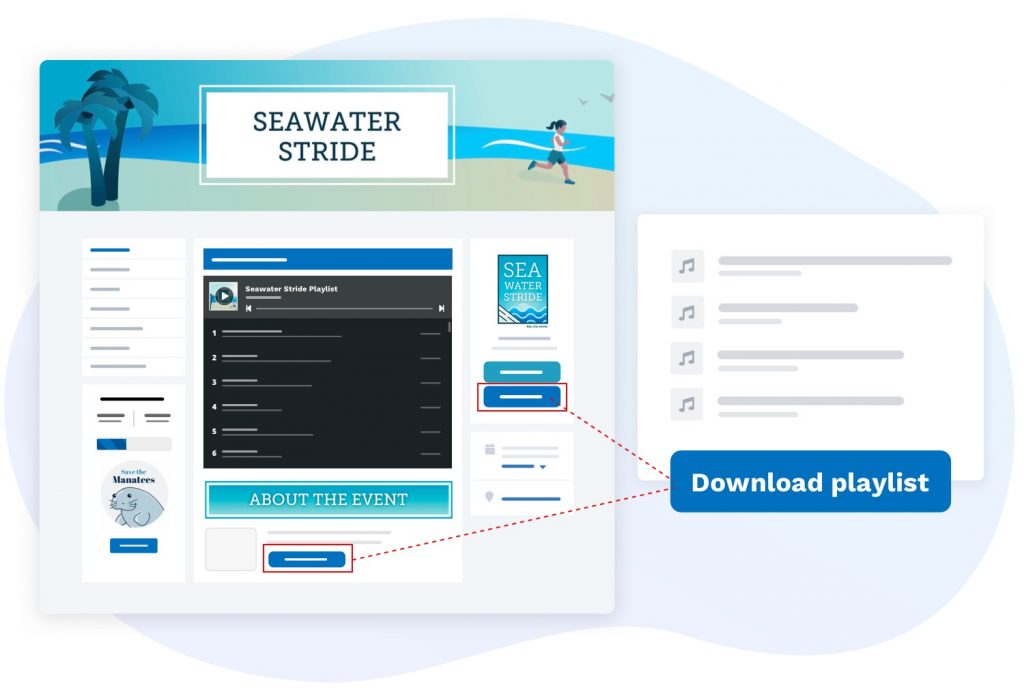
Other Tips
- Add album artwork and a description to your playlist to reflect your event branding.
- Share your playlist on social media platforms such as Facebook, Twitter, and Instagram.
- Include artists and bands that are from your region.
